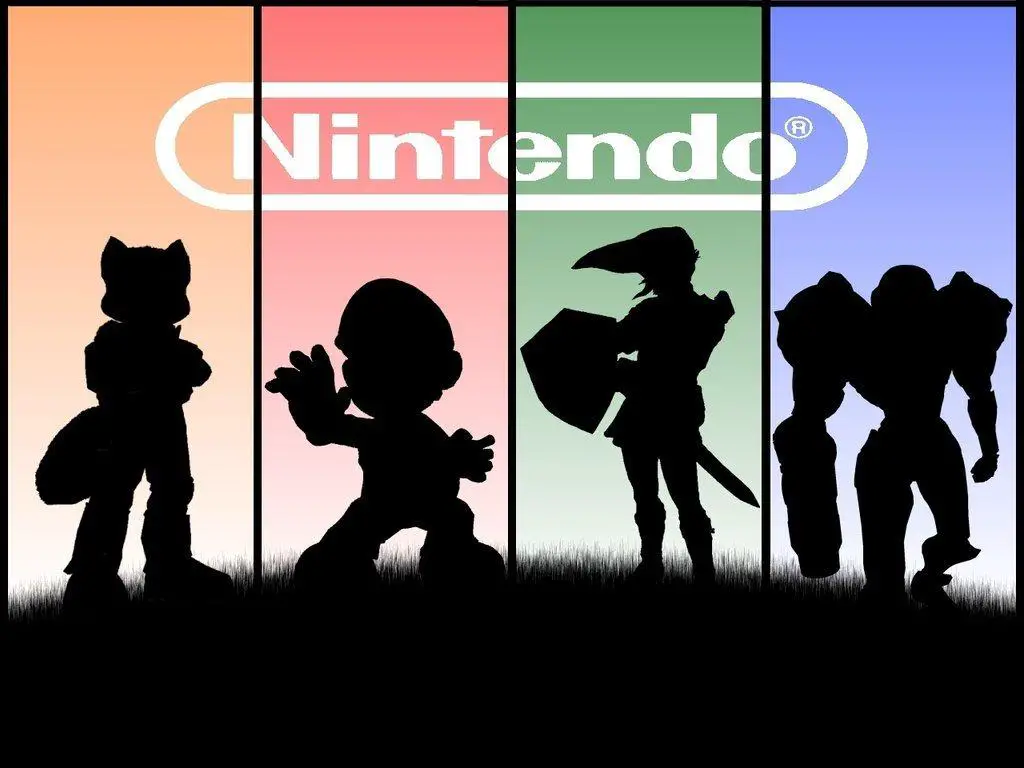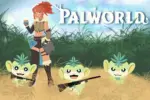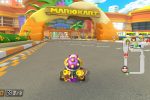Nintendo is no stranger to failure. The company’s headache-inducing Virtual Boy and powerful-but-useless 64DD are remembered only as embarrassing trivia. Even the Nintendo 64 and Gamecube, much-loved by college students of today, underperformed in sales, shipping only a third or less of the total units that Sony did.
The Wii, on the other hand, was a runaway success, selling over a hundred million units. The cause of this figure—the novelty of motion control—was a stroke of luck: Both Sony and Microsoft passed on the technology that made the otherwise weak hardware fun to play. The little white rectangle’s achievements prompted Nintendo to release the Wii U, which has suffered an identity crisis from day one. For years after its launch in 2012, consumers and retailers were confused as to what it actually was; many were under the impression that the main controller, the Gamepad, was simply a peripheral for the Wii, which had already seen many upgrades and add-ons.
The name alone wasn’t enough to set it apart from the predecessor (clearly, Nintendo hasn’t learned their lesson, with the baffling announcement of the “new” Nintendo 3DS, which is easily mistaken for any of the other variations of the console since 2011). Releasing just before the PS4 and XBOX ONE, the Wii U was also cripplingly underpowered from a hardware standpoint, only able to produce games slightly more advanced than the PS3 and XBOX 360. Though it initially had the support of big companies like Ubisoft and Activision, developers quickly abandoned ship due to poor sales. Since then, the only quality high-budget games released for the Wii U come from Nintendo directly, or from companies that Nintendo has contracted specifically. This puts it in a unique place in the market, where sales of the console depend on the few big titles released out of the year.

Traditional classics like Super Smash Bros., Mario Kart 8, and Super Mario 3D World have all served to boost sales, while fresher, more creative titles like Bayonetta 2, Pikmin 3, Mario Marker, and Splatoon serve as a reason to keep playing. The addition of Amiibo, the collectable real-world figurines that affect gameplay, serve as an additional source of revenue among from dedicated fans.
It’s worth mentioning the 3DS as well, as it’s basically carrying the company at this point. It’s held up against mobile gaming and has sold 53 million units, about five times the number of the Wii U. If Nintendo wants to truly succeed, however, they need their next console (codenamed “NX”) to really blow the competition out of the water. Little is known about the NX except that it seems to be both a home console and a portable, and that it’s going to contain “industry leading” technology.
Nintendo certainly seems to be gearing up for a mass of important launch titles, as their current and upcoming crop of games are mostly lackluster spin-offs. Animal Crossing: Amiibo Party, Metroid Prime: Federation Force, and Legend of Zelda: Triforce Heroes are all half-baked concepts that appear to be filling the void between this generation and the secret project on the horizon.
What’s troubling is that Nintendo’s biggest competitor in the 90’s, SEGA, already attempted this and failed. They soiled the sterling reputation of their beloved Genesis console with confusing and unsuccessful console “add-ons” like the Sega CD and 32X. Like the Wii U, these were marketed in a confusing hype haze that obscured what they actually did, and though each had a few solid titles in their limited libraries, consumers didn’t buy into what was essentially life support for their aging Genesis while SEGA worked on their next ill-fated console, the Saturn.
Released just before Sony’s Playstation in 1994, it became immediately clear that the Saturn was doomed. Not only was it initially $100 more expensive, but it was incapable of the type of quality 3D graphics that were becoming staples. By the time the Nintendo 64 hit the scene in 1996, it was all but dead in the water. Sega’s final attempt at bypassing the competition fell to their Dreamcast, which was launched in America on 09/09/1999 (three years after the N64 and four after the Playstation). Though it was technically twice as powerful than other consoles of the time, featured four control ports, online support, and games from popular series like Sonic, Marvel Vs. Capcom, and Crazy Taxi, the damage had already been done. Most game developers didn’t trust SEGA, and consumers didn’t either—only the very loyal purchased their new console. By 2001, it was discontinued.
Atari’s 64-bit Jaguar suffered the same fate when it tried to steal sales from the 16- and 32-bit consoles of the mid-90s, and to this day Atari only barely exists as a casino-games entity, having gone bankrupt in 2013 with a staff of only 10 people. The Sega CD, Saturn, and Dreamcast are all remembered fondly among collectors today for their creativity and library of (occasionally bizarre) games, but that doesn’t change the fact that SEGA is now a struggling third-party developer best known for interactive urinals and screwing up Sonic games on an annual basis.
While it’s been speculated that Nintendo has enough money to run a deficit for more than 30 years, the company’s radical approach with their change in position on smartphone games and putting all their efforts into “pulling a dreamcast” by releasing an experimental new powerhouse mid-generation, paint a worrying picture, especially if the combined console and handheld concept means the end for the profitable 3DS.
For gamers, all hope is not lost. With a new Starfox and a new Zelda confirmed for the Wii U in 2016, it’s becoming clear that Nintendo has no plans to abandon their loyal fans, regardless of their financial struggles. With bundles coming in at $300 and a price cut likely on the way, there’s never been a better time to buy into this cult classic console with a totally unique library of games. Just keep in mind that this might be one of the last years before we start seeing Super Smash Bros. show up on a Sony console.


















[…] games kept players docile, Nintendo released the Wii along with “Wii Sports” in 2007 to get everyone and their grandma off the couch for a few games […]